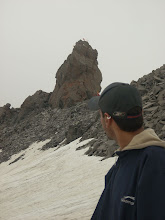 Solan
Solan was the capital of erstwhile princely State Bhagat. The concept of Himachal Pradesh was here mooted in a conference of princes of various hill State of Western Himalayas and representatives of Prajamandal, fighting for independence from the yoke of princely rule, on 15th of April 1948. It remained a Tehsil of Mahasu district till 25th January, 1971 when Himachal Pradesh gained the status of full-fledged State and Solan became the headquarters of District Solan.
At a height of
1350m, it has salubrious climate throughout the year. It has been declared as the '
Mashroom City of India' in the nineties because here is produced a variety of button mushrooms. It has the famous Brewery that was established in the year 1835 by Dyer Meakins (Mohan Meakins today).
Temples of Shoolini Devi, Narsingh and open parks are the places to visit in the town. Karol Tibba (Peak), Meteol Tibba, Kotla Nallah (Stream), Saproon springhare other places of interest. Not so far, are Mareog, Gaura and Karkanu, the angling spots by river Giri. You can also enjoy the facility of HP State Library here.
Dr. Y.S. Parmar University of
Horticulture and Forestry is situated at Nauni at a distance of 15km from the town. It nurtures 15,000 species of flora and has successfully domesticated an enormous variety of herbs.
Wander away from Solan
Chail:
The summer capital of the former princely State of Patiala built in the late 19th century at a height of 2226 m known for exquisite Palace Hotel of HPTDC and at 2444.4 m the Highest Cricket Pitch and Polo Ground in the World. Easy walks in and around Chail amidst green forests, stroll at wild life sanctuary and fishing along Gaura river can be interesting.
Shillon Bagh:
Not so far from here, it is a private hotel on Chail-Kufri road. Dochi, Maharaja Patiala's farmhouse, known for exotic gladioli and other flowers, is hardly few kms on Chail-Kandhaghat road.
Barog:
Just 7 kms from Solan, the small village at a height of 1680m is gradually developing into a township dotted with quite a few hotels and eateries. This little township has come up on top of a hill through which runs the longest tunnel in Kalka-Shimla Railway line. The northern end of the tunnel opens on a tidily kept railway station at Barog where exists a pretty, cozy dining room having a wall clock marked with 'Benson of London, NW Railways 1903'.
Kasauli:
Its proximity to plains,35 km away from Kalka, makes it more in demand of tourists who flock in here when there blazes the sun. Dainty English style cottages, oldy goldy shops, forests of pine and horse chestnut, magnificent view of the Gangetic plains which turns into a spread of twinkling lights under the cover of darkness, refreshing mountain breeze and much more is there at a height of 1927 m of Kasauli.
A vantage spot for views is Monkey Point. Dominating Choor Chandni (3647 m) standing majestically above all the lower hills leaves an imprint. Sanawar with a famous public school, Garkhal with Shirdi Sai Temple, Sabathu with a 19th century Gorkha Fort, Dagshai with a cantonment are other places worth visiting when in Kasauli.
Nalagarh:
A diversion from Pinjore, falling between Chandigarh and Kalka, towards west takes visitors to Nalagarh, an ancient town that has a look of any town in the plains. The best part of the stay at The Fort, Nalagarh, a Heritage Hotel, where one can enjoy the nostalgia of the past in the comforts of the present.
Arki:
The capital of princely State of Bhagal lies off Shimla-Bilaspur highway. Fine wall painting can be seen in the old palace. Visit to Kaliseli, Brampukhar, Bari Dhar, Ghagnu Ghat and temple of Vanya Devi may be interesting.






















